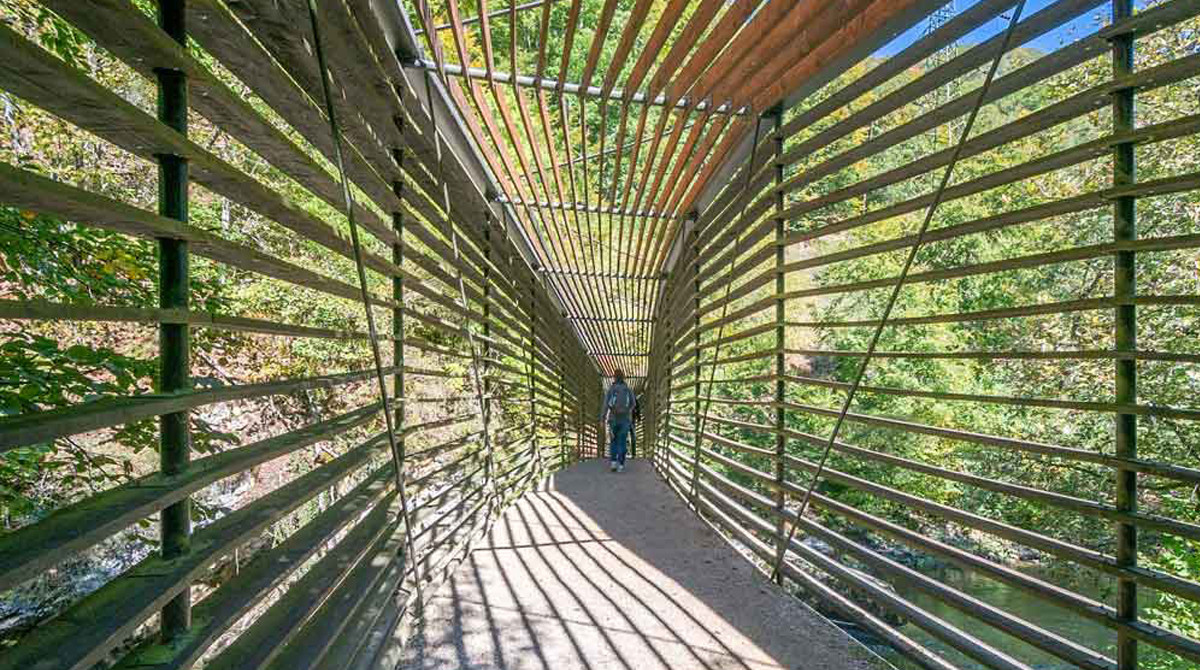No doubt: regular structures captivate our brain. They help the zebra to ward off insects, the leopard to camouflage. Whether it’s waves, desert dunes, snowdrifts, power lines or in architecture: structures produce diverse and interesting motifs, let’s discover them.
Surfaces always consist of a certain structure. Freckles and raindrops on the table and have one thing in common: they are irregular, but form a structure thanks to visual features.
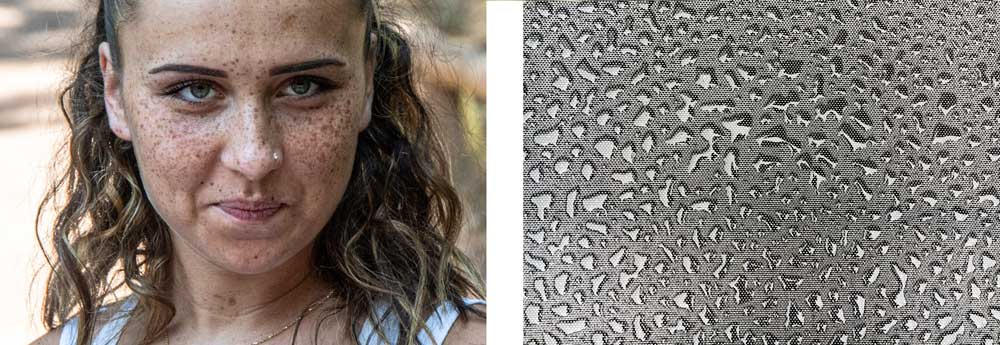
Irregular structures can be found on many surfaces in all imaginable shapes and colors.
When a surface has a pattern, we see a structure in it. Patterns are repetitive shapes that share common visual features. In the case of raindrops, it is the plasticity and shiny surface; in the case of freckles, it is the dark pigmentation. Most of nature’s patterns are arguably irregular: sand dunes, snowdrifts, undulations, fleecy clouds, pine forests. Patterns are particularly striking when they appear regular or occur in a combination of regular/irregular. Graphically, we distinguish three geometric elements that can occur as patterns: Point, Line and Area. These elements can be lined up regularly, but can also occur in other variations.
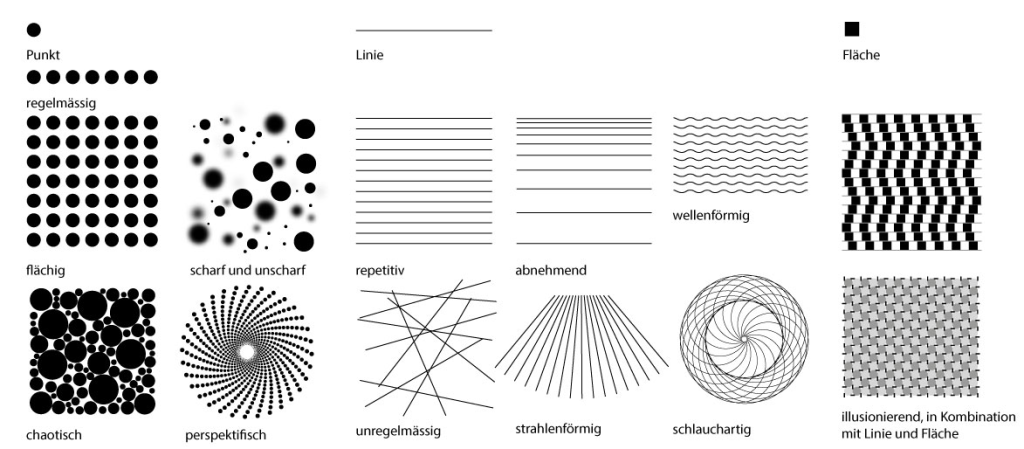
Perspective creates a tapering towards the back or upwards, which causes decreasing distances. From a photographic point of view, sharpness is also interesting, which, for example, also creates regular patterns as out-of-focus circles in macro photography.
In nature, irregular patterns are found in abundance. You just have to open your eyes to it and activate the search filter “pattern” in your head.
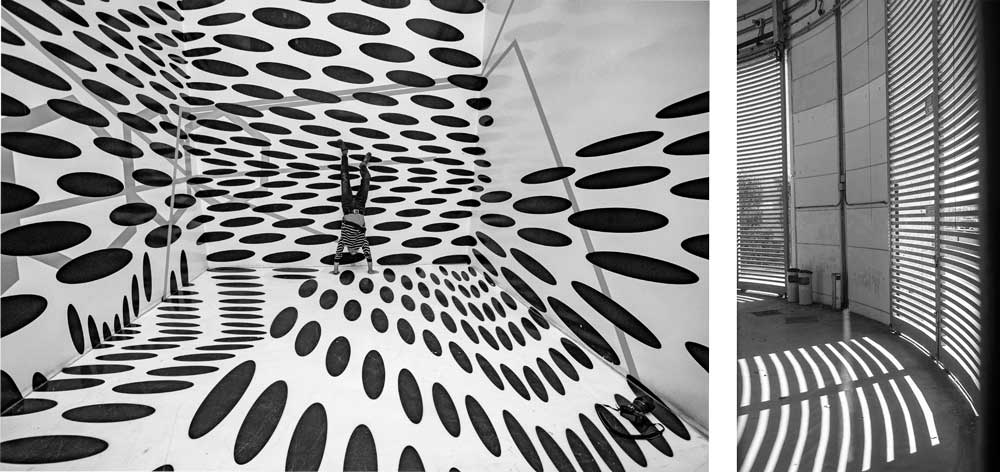
Left: Entrance hall to a restaurant at the Venice Biennale. Right: Shadows cast at the Milano Congress Center.
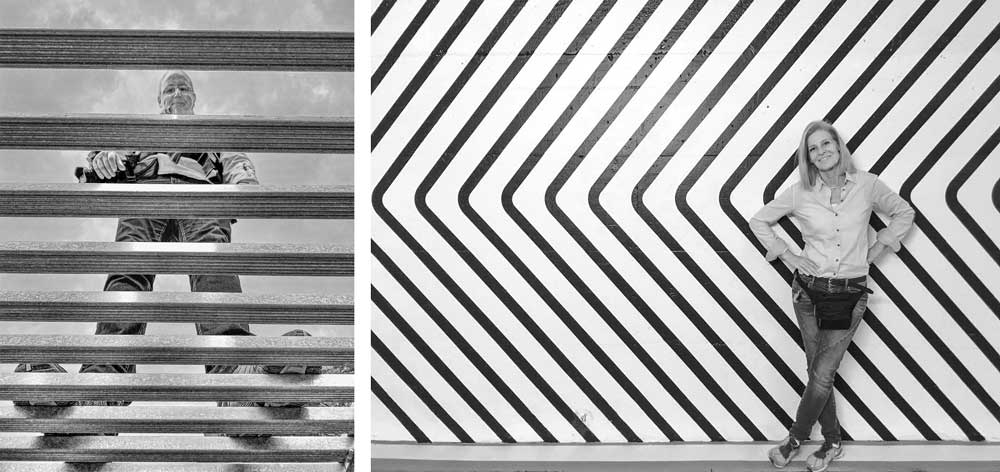
People can be perfectly integrated into given structures.
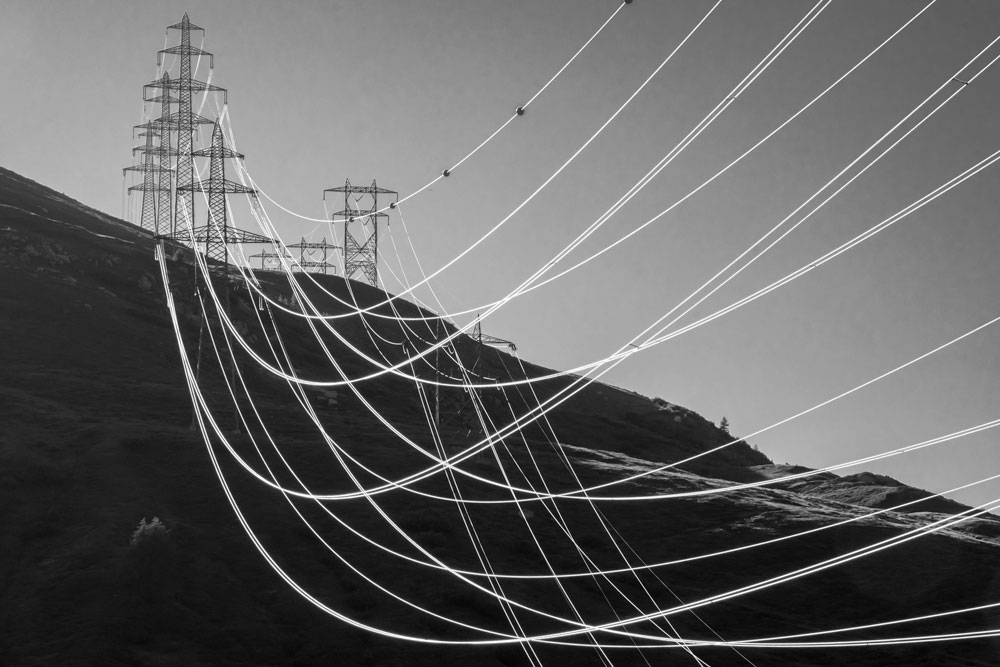
Power line on the Nufenen Pass near Ulrichen. The lines lead curved into the picture. They form a structure.
Tip 1: Develop a way of seeing that does not perceive motifs, but points, lines and surfaces.

Road patched with tar in Basel. The uniform surface of the lines structures the pavement.
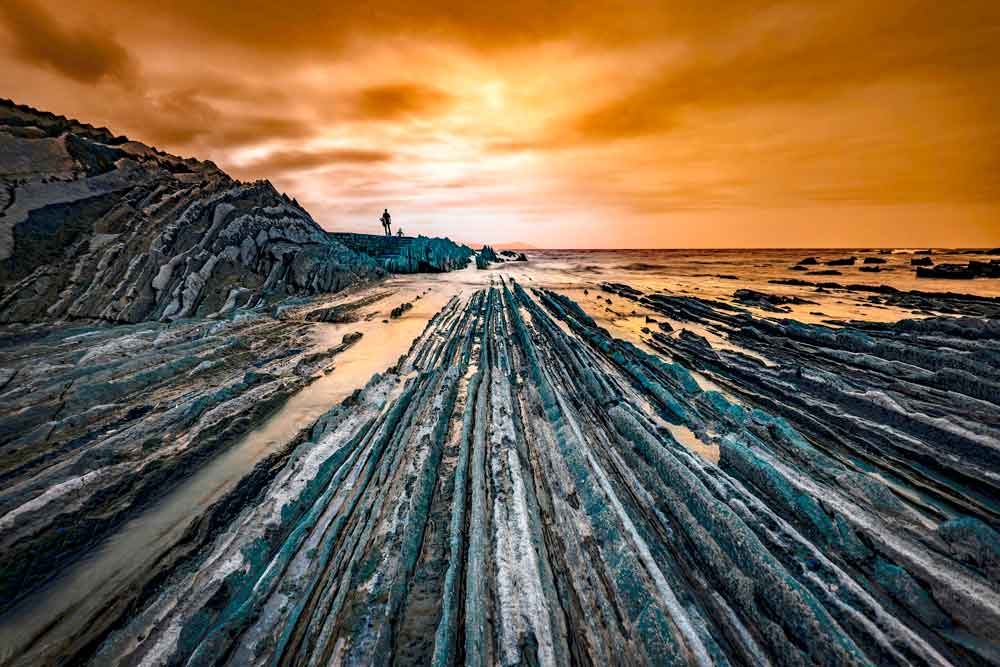
Perspective effect of layered rock. Flysch cliffs in Zumaia, Spain. The vertical rock layers form a spectacular line structure.
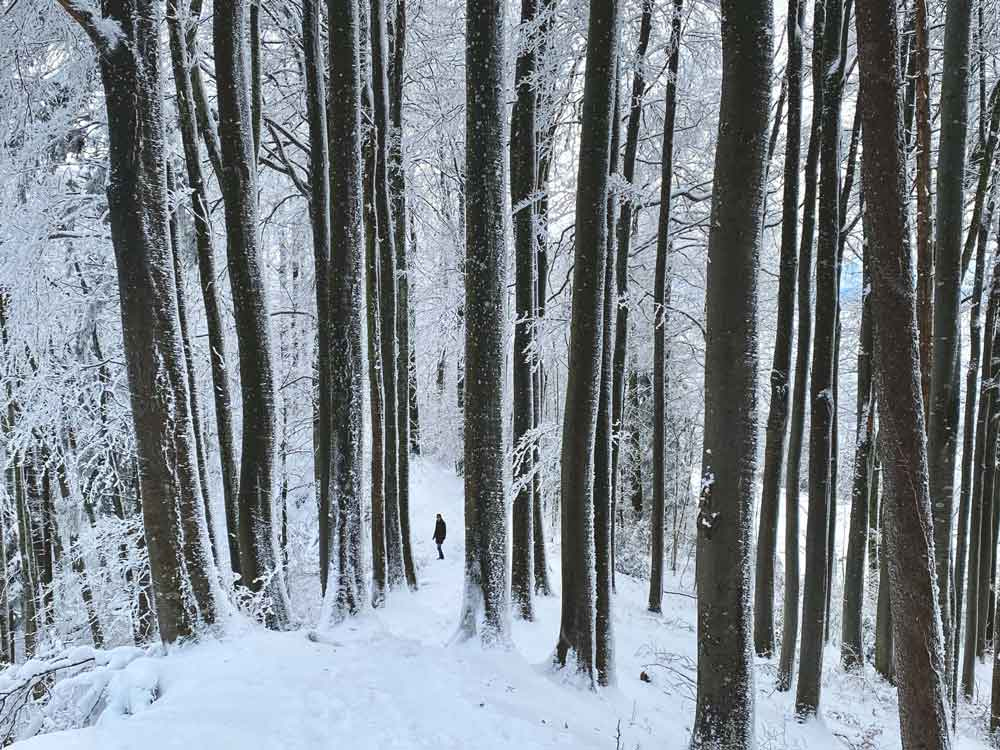
The laterally snow-covered trunks show a vertical black-and-white pattern. Albishorn, Hausen am Albis.
In urban environments, patterns are everywhere in architecture. They emerge almost single-handedly when facades are designed. Patterns are as old as architecture: mosaics, paved squares, gothic porticoes, palaces or modern glass facades impress with their different patterns.
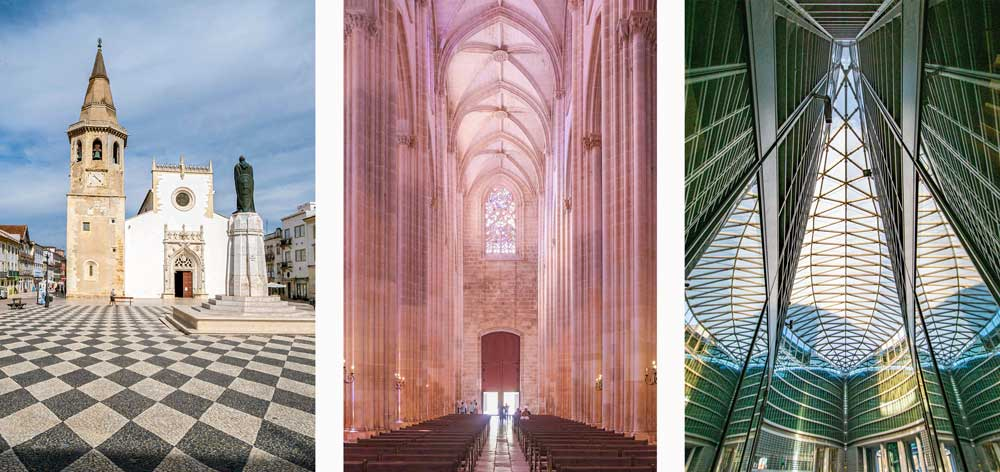
From left: Tomar, Portugal; Mosteiro da Batalha, Portugal; Palazzo Lombardia, Milan. Patterns are found everywhere in architecture.
In old towns, narrow alleys invite visitors to stroll. The little houses stand close together and each building is slightly different from the other. The whole ensemble, however, is a huge pattern of the attractive kind. The architectural styles of Gothic, Renaissance, Baroque, Classicism and Art Nouveau each produced different patterns or ornaments.
Tip 2: Almost all your subjects in front of the camera consist of structures – if you just get close enough.
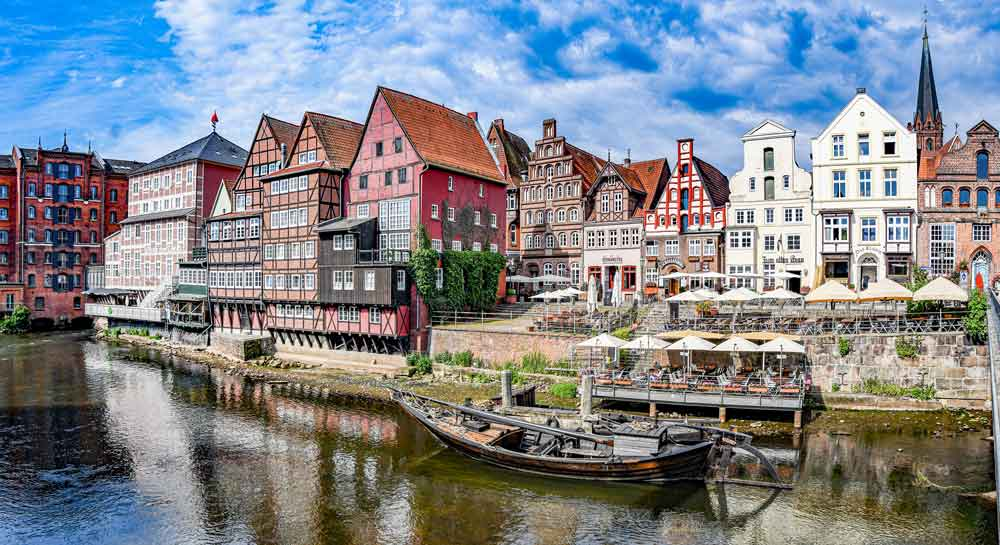
Lüneburg. House facades in half-timbered style form an irregular rhythm.
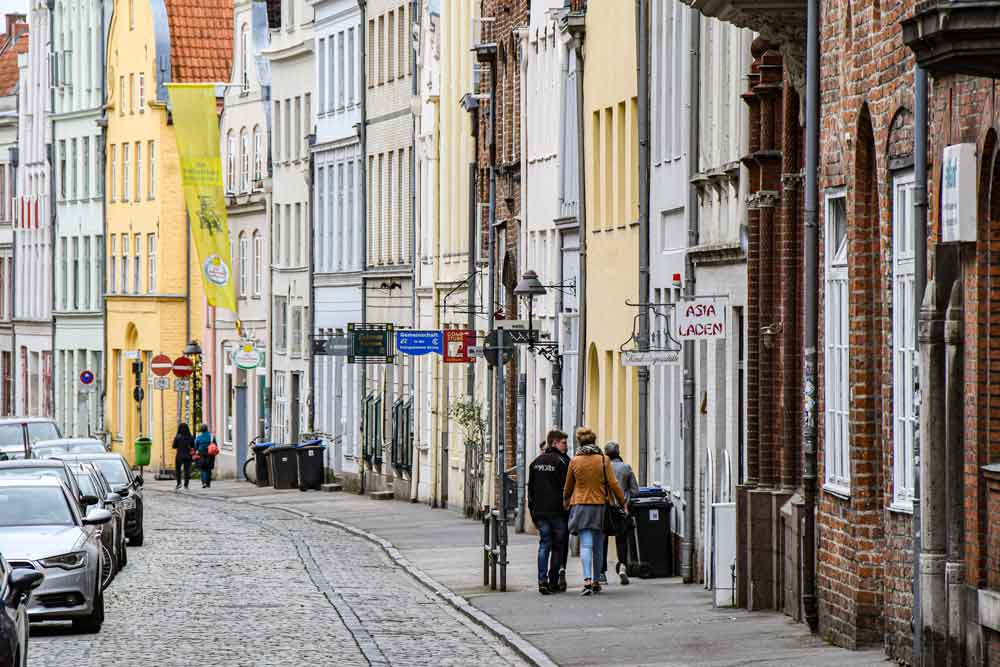
Lübeck: Viewed in alignment, the facade sections with their windows form vertical patterns.
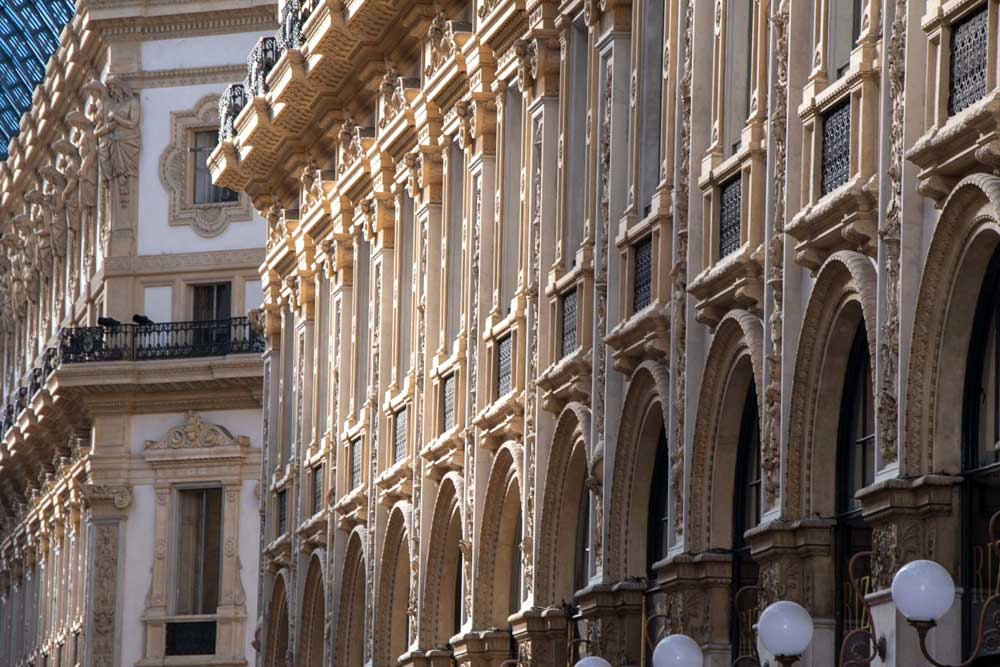
Galleria Vittorio Emanuele II in Milan. Here, vertical, horizontal and round meet.
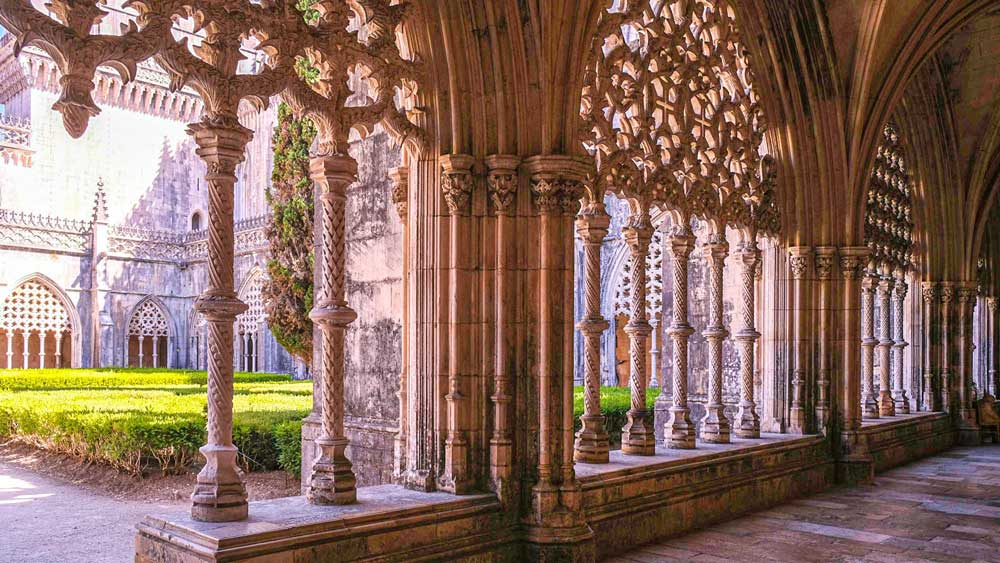
Manueline architectural style at Batalha Cathedral, Portugal. The ornate patterns of Manuelinism date back to King Manuel I in the 16th century. They are unique in the world.
Tip 3: The essence of structures is often light and shadow. You can see them better in backlight.

When the sun is low in the sky, the stair railing appears on the facade of the house. The photo gets a double plasticity.
I’m also taken with modern architecture in terms of patterns. My eye is magically drawn to it. It’s the lamellar architecture, which mostly shoots up vertically and thrives on high contrasts. The lamellas are crossed horizontally by the floors, which taper in perspective towards the back. Such facades are especially attractive in black and white, because the form is emphasized and no colors distract from it. Structures also appear as shadows. With the right angle, you can create perspective effects.
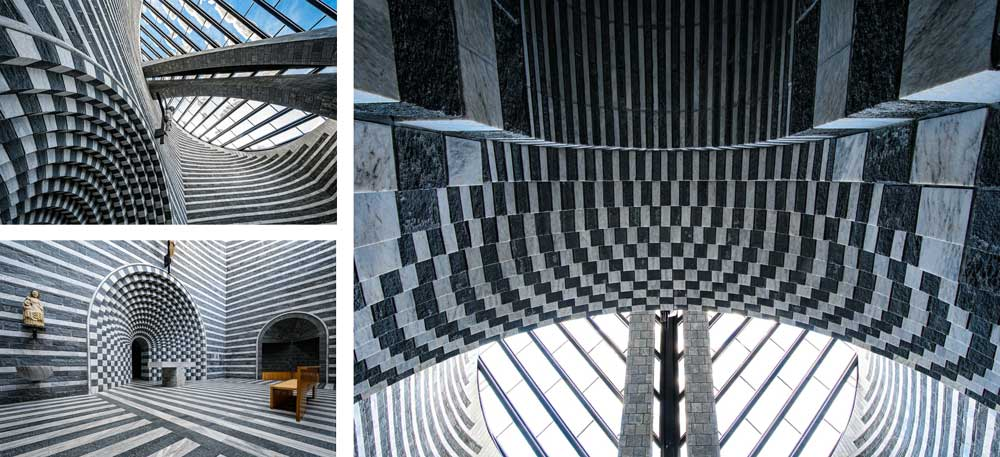
The great master of structures is the architect Mario Botta. His typical structured architecture is world famous. The picture shows the chapel of Mogno, Ticino.
Tip 4: Structures are made of form, not color. Convert your structural images to black and white. This will bring out the essence of the photos better.
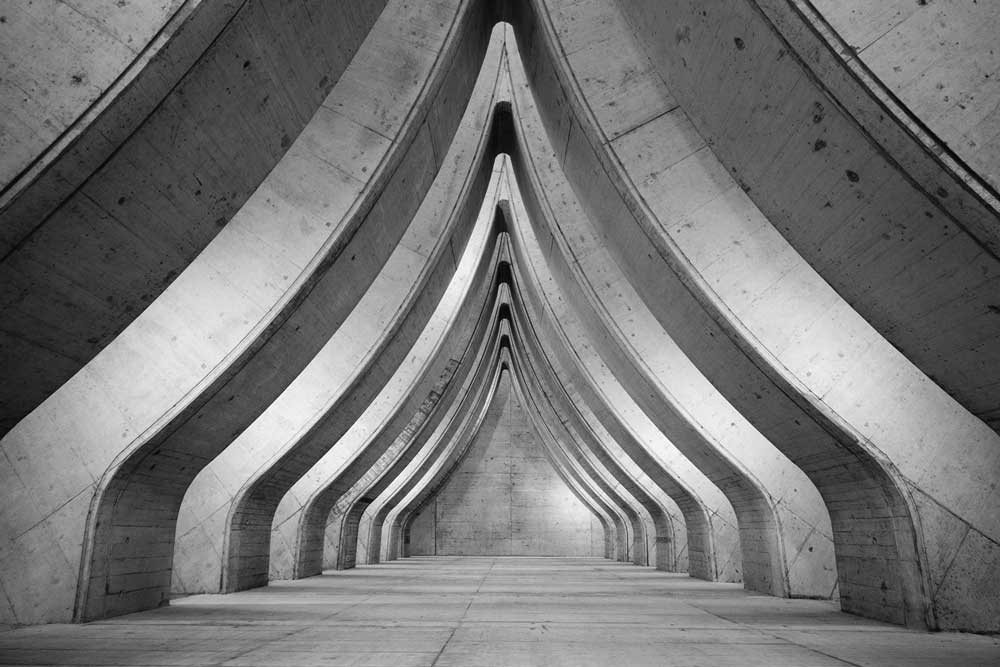
The Sihlcity parking garage, Zurich, seen from bottom to top. In the curves are the driveway and the exit to the parking levels. The view is deceptive: what is perceived as the ground is actually a wall running vertically upwards.
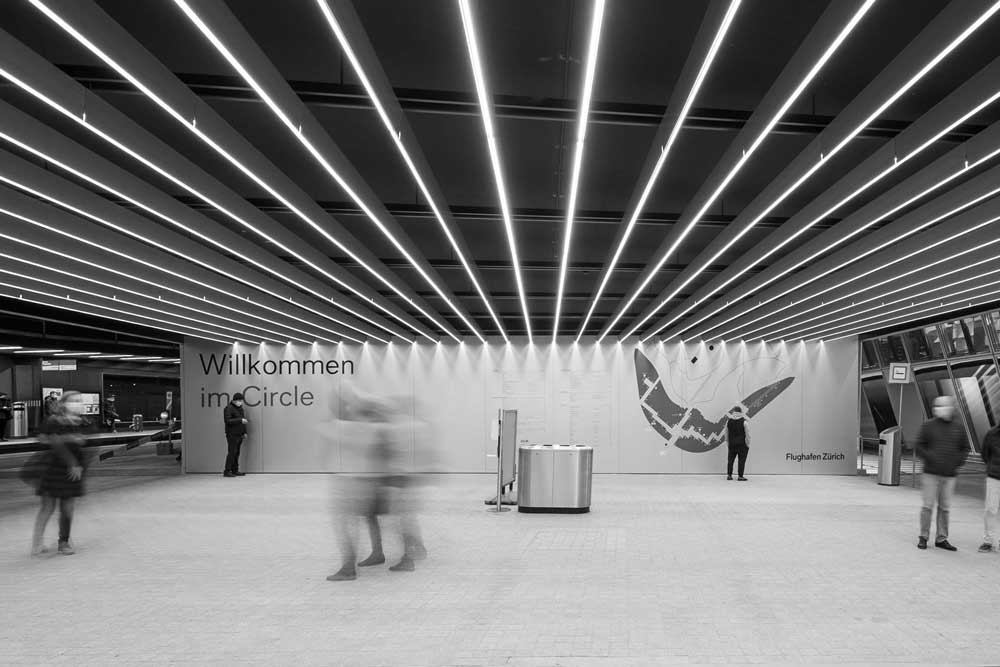
The Circle, Zurich Airport. Neon lights create a perspective effect.
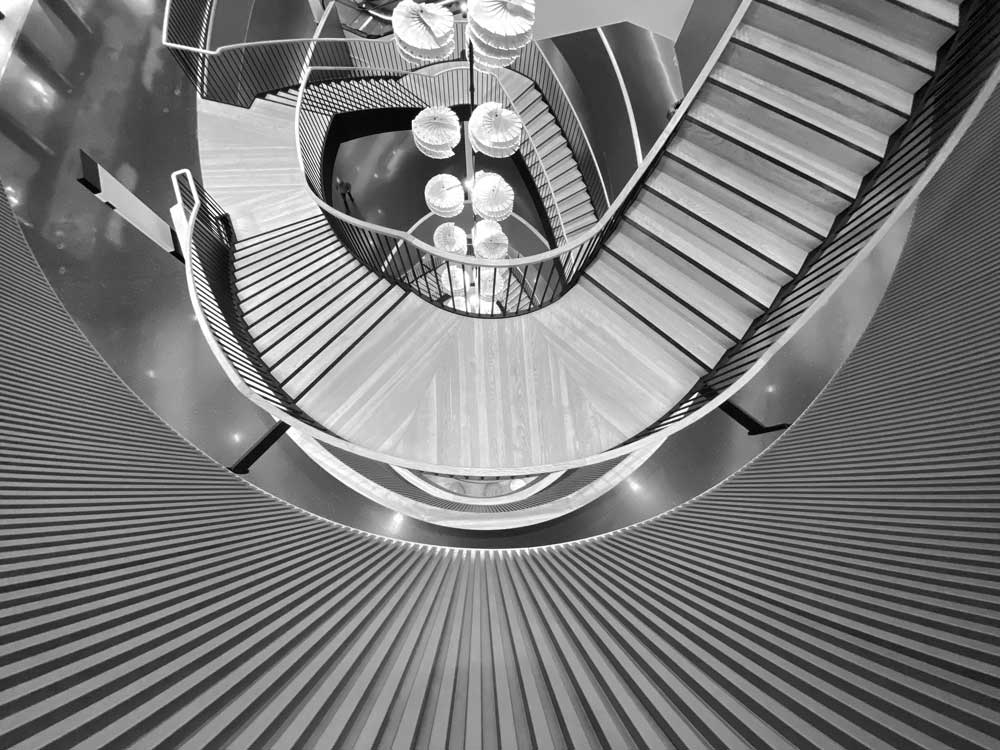
Sihlcity, Zurich. Patterns are omnipresent in interior design.
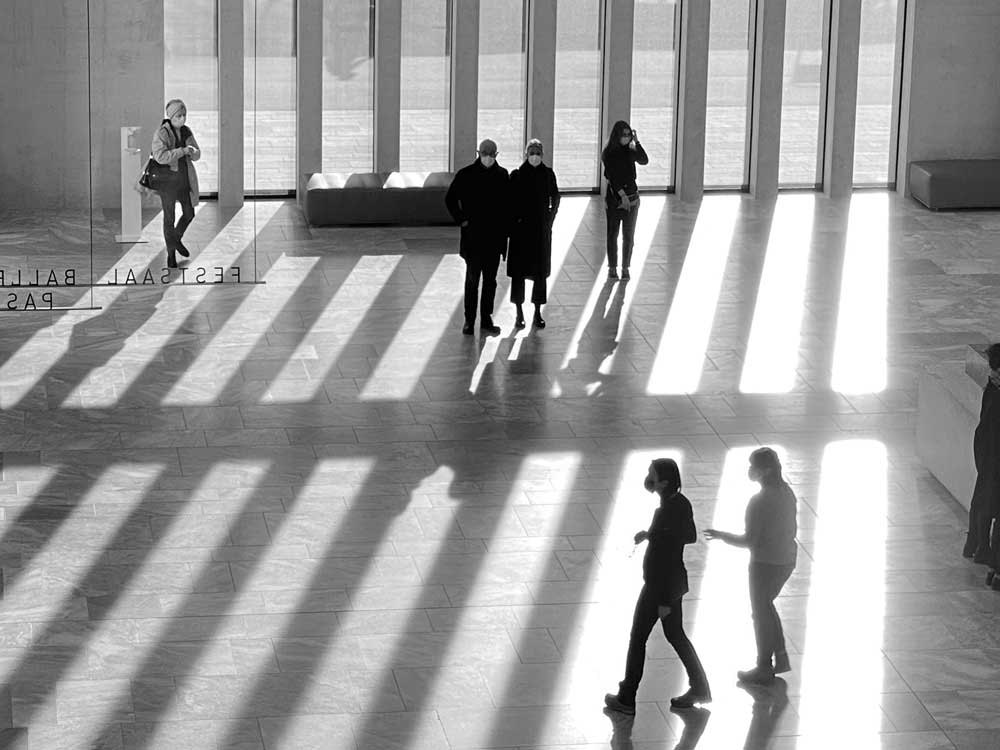
Kunsthaus Zurich. The afternoon light flows into the entrance hall through the vertical concrete slats – it naturally structures the tiles.
Tip 5: For certain architectural photos, straighten the camera or straighten the perspective in post processing.
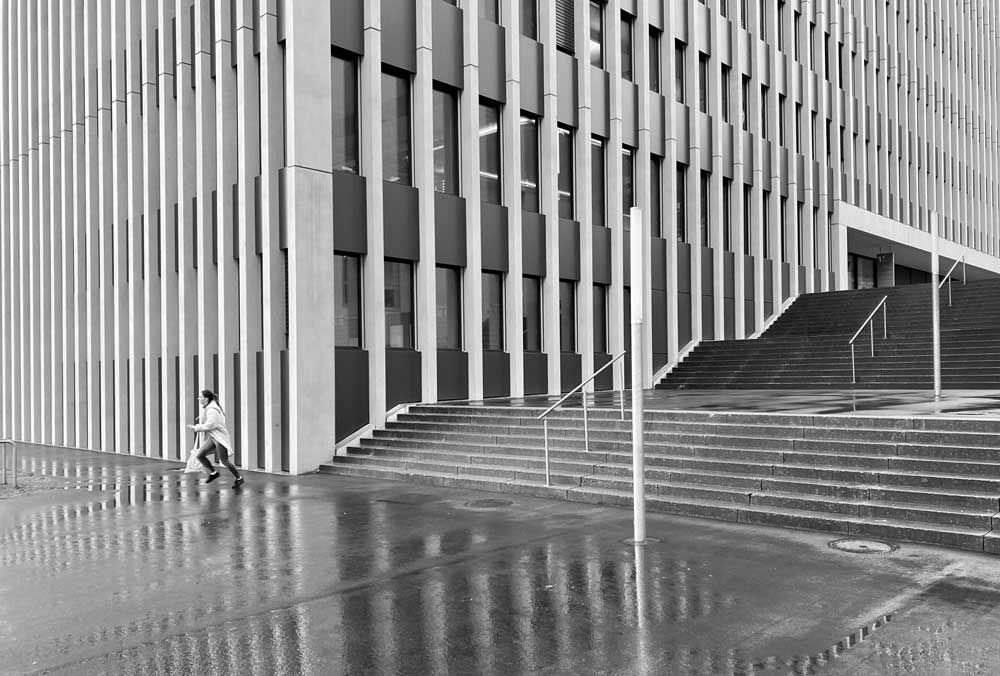
Technopark Luzern D4, Root. The vertical slats form a rhythm that tapers toward the back. The wet floor mirrors the pattern.
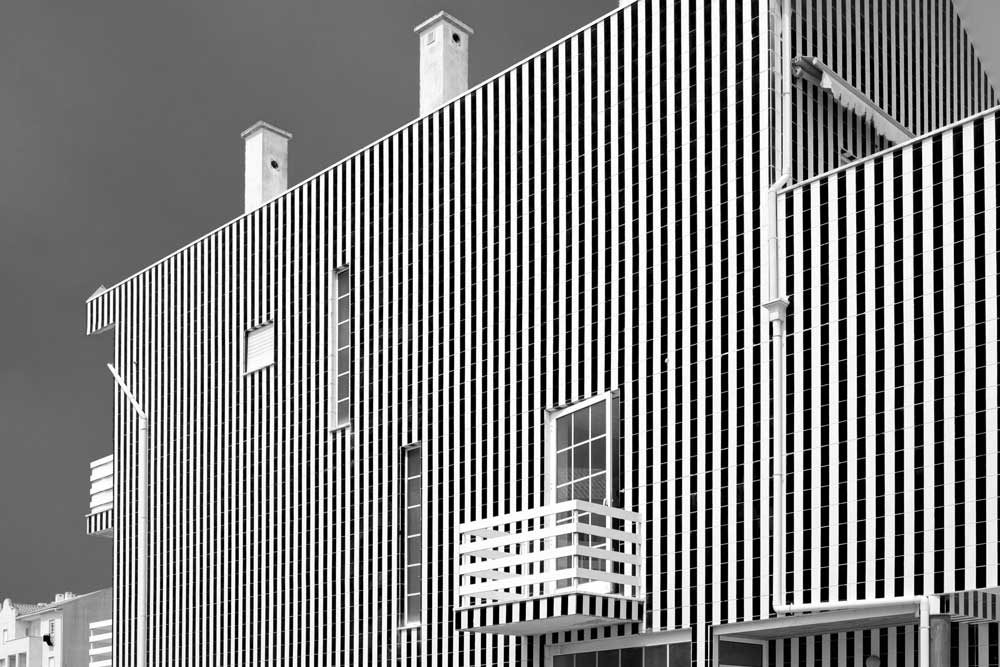
House in Nazaré, Portugal. The blue and white striped facade develops a strong visual appeal.
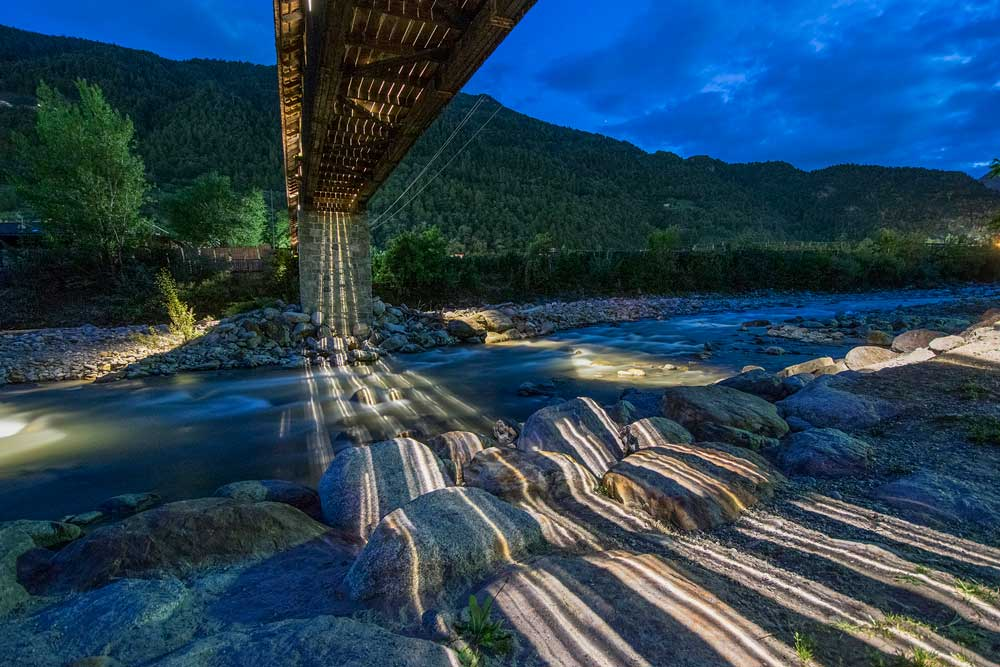
A wooden footbridge crosses the Adige River near Algund in South Tyrol. It is illuminated by lanterns at night, the light rays penetrating through the planks to the bottom and forming a pattern of lines on the boulders.
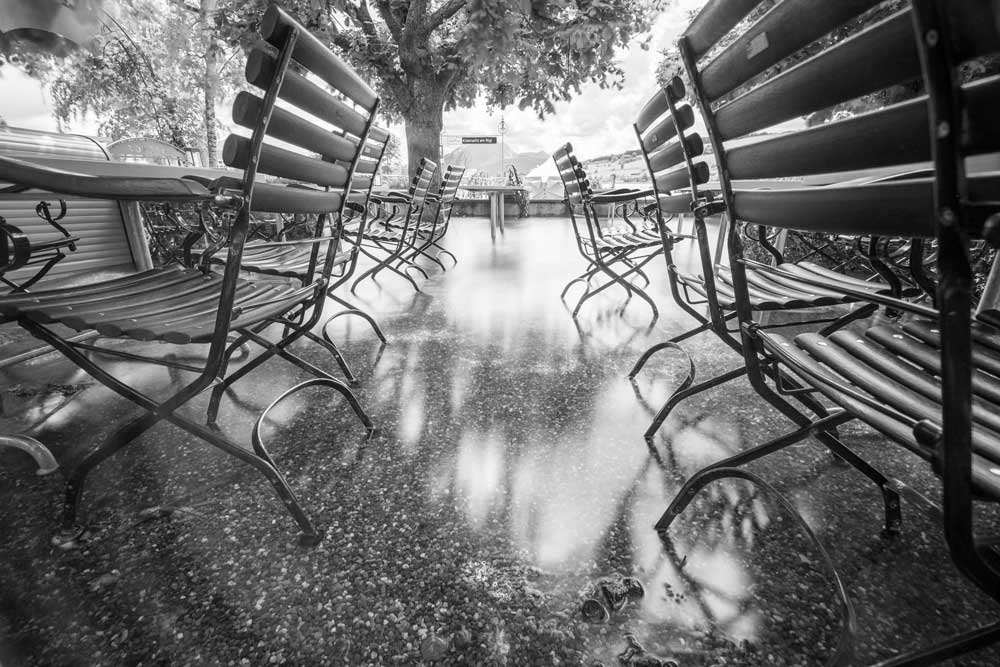
Flooded garden restaurant during a flood in Küssnacht am Rigi. The slats of the chairs direct the view to the back. I took the photo with a neutral density filter and a long exposure time.

Selfie in front of the Museo delle Culture in Milan.
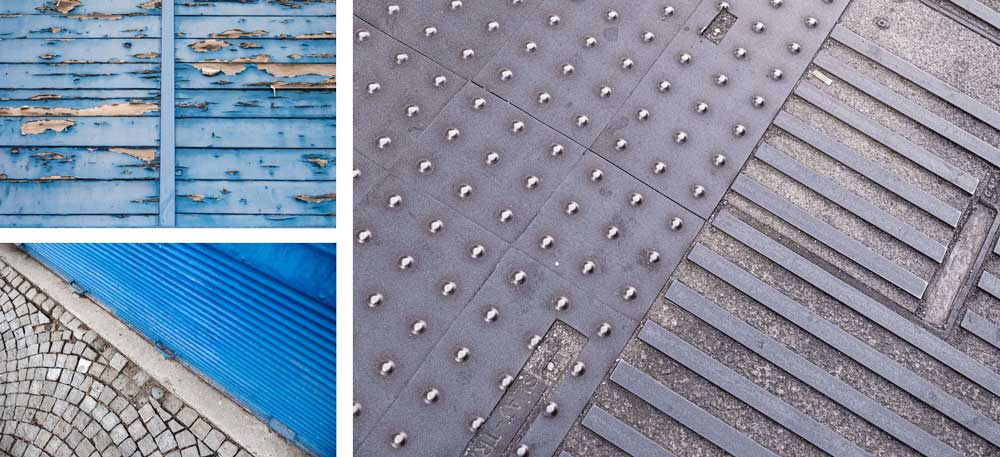
If you sharpen your eye for patterns and structures, you will find motifs at every corner. Geometry allows for design exercises: horizontal-vertical or diagonal.

Structures can be found in nature as well as in architecture in many different ways.
Repetitive, regular or irregular structures can be found everywhere: on a gravel bed, in a fir forest, in a sea of sunflowers, in rippling water surfaces or in the city. Sharpen your senses and open your heart to dots, lines, or planes. A little texture never hurt anyone …
You can find more ideas and photos in the book: «Fotografie für dich»

Ralf Turtschi; Fotografie für dich; 272 pages, hardcover with perfect binding and round spine, with over 750 photos and illustrations; price Fr. 40.- (excl. shipping/packaging); includes two vouchers, one for Fr. 30.- from Bookfactory, one for Fr. 20.- from Printolino. Self-published.
Information and orders via the webshop: www.fotografie-fuer-dich.ch or in bookshops

